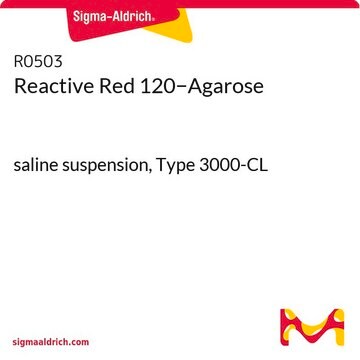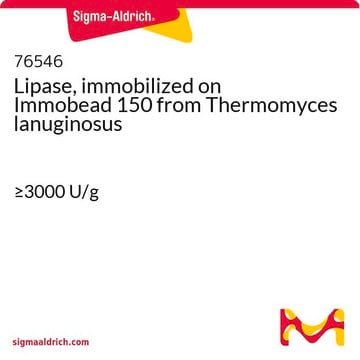88793
Atto 532 NHS ester
BioReagent, suitable for fluorescence, ≥90% (HPLC)
Synonym(s):
Atto 532
Sign Into View Organizational & Contract Pricing
All Photos(1)
About This Item
Recommended Products
product line
BioReagent
Quality Level
Assay
≥90% (HPLC)
≥90% (degree of coupling)
form
powder
manufacturer/tradename
ATTO-TEC GmbH
λ
in methanol: water (1:1) (with 0.1% perchloric acid)
UV absorption
λ: 532-538 nm Amax
suitability
suitable for fluorescence
storage temp.
−20°C
General description
Atto 532 NHS ester is a fluorescent dye related to the well-known laser dye, Rhodamine 6G. The fluorescence activity is excited efficiently at the 515-545nm range. A suitable excitation source for Atto 532 is the 532 nm output of the frequency-doubled Nd: YAG laser.
Application
Atto 532 NHS ester is highly suitable for single-molecule detection applications and high-resolution microscopy such as PALM, dSTORM, and STED. In addition, the dye is used in flow cytometry (FACS) and fluorescence in-situ hybridization (FISH) methods.
Features and Benefits
Characteristic features of the Atto 532 NHS ester are:
- Strong Absorption.
- High Fluorescence quantum yield.
- High Photostability.
- Excellent water solubility.
Storage Class Code
11 - Combustible Solids
WGK
WGK 3
Flash Point(F)
Not applicable
Flash Point(C)
Not applicable
Personal Protective Equipment
dust mask type N95 (US), Eyeshields, Gloves
Choose from one of the most recent versions:
Already Own This Product?
Find documentation for the products that you have recently purchased in the Document Library.
Customers Also Viewed
Rumelo Amor et al.
Scientific reports, 4, 7359-7359 (2014-12-09)
Standing-wave excitation of fluorescence is highly desirable in optical microscopy because it improves the axial resolution. We demonstrate here that multiplanar excitation of fluorescence by a standing wave can be produced in a single-spot laser scanning microscope by placing a
Kiyoto Kamagata et al.
Journal of the American Chemical Society, 134(28), 11525-11532 (2012-06-14)
A method was developed to detect fluorescence intensity signals from single molecules diffusing freely in a capillary cell. A unique optical system based on a spherical mirror was designed to enable quantitative detection of the fluorescence intensity. Furthermore, "flow-and-stop" control
Moritz Marcinowski et al.
Nature structural & molecular biology, 18(2), 150-158 (2011-01-11)
The endoplasmic reticulum is the site of folding, assembly and quality control for proteins of the secretory pathway. The ATP-regulated Hsp70 chaperone BiP (heavy chain-binding protein), together with cochaperones, has important roles in all of these processes. The functional cycle
John F Lesoine et al.
Nano letters, 12(6), 3273-3278 (2012-06-06)
We present a method for measuring the fluorescence from a single molecule hundreds of times without surface immobilization. The approach is based on the use of electroosmosis to repeatedly drive a single target molecule in a fused silica nanochannel through
Stefan Bretschneider et al.
Physical review letters, 98(21), 218103-218103 (2007-08-07)
We report the breaking of the diffraction resolution barrier in far-field fluorescence microscopy by transiently shelving the fluorophore in a metastable dark state. Using a relatively modest light intensity of several kW/cm(2) in a focal distribution featuring a local zero
Our team of scientists has experience in all areas of research including Life Science, Material Science, Chemical Synthesis, Chromatography, Analytical and many others.
Contact Technical Service







